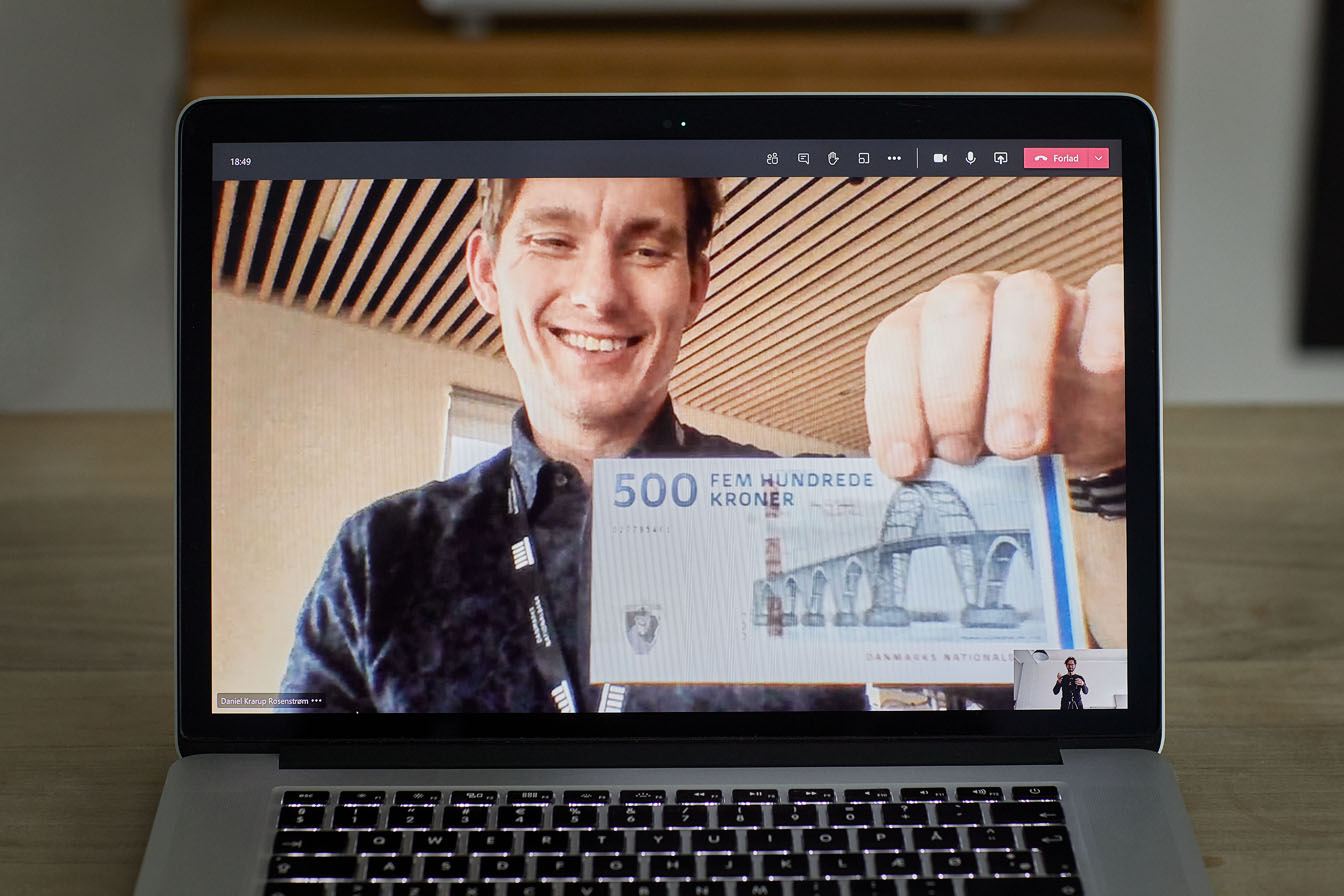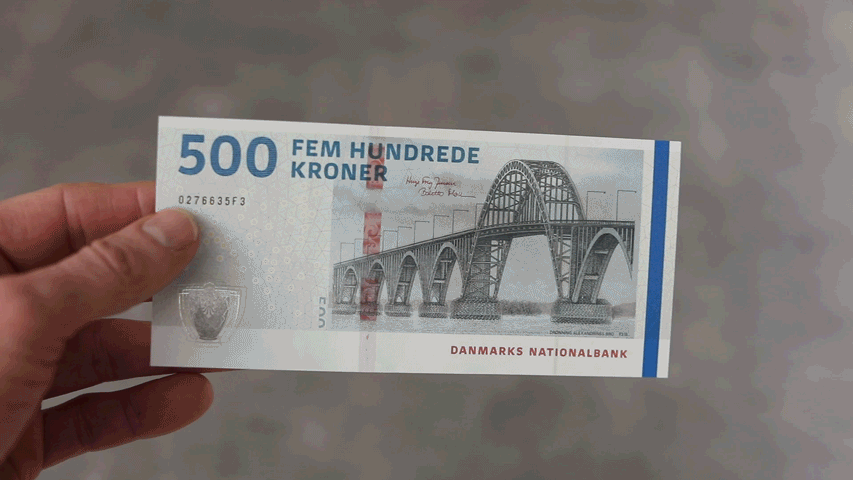Clean Scandinavian Banknote Design and Setting the Public First
Denmark’s Route to Upgraded Banknotes with Intuitive Public Authentication
When Daniel Krarup Rosenstrøm woke up at home in Copenhagen on Tuesday November 17, 2020, he knew that it was a special day. For Danmarks Nationalbank, the Central Bank of Denmark, where Daniel is Head of Procurement and Quality, and after years of preparations, the Danes who were presented with a new 500 kroner banknote, the first in a new series equipped with the most advanced security features available.
But the new note was not introduced with the traditional bells and whistles. Instead of creating a completely new series, Danmarks Nationalbank had decided to keep the previous series’ clean Scandinavian style – but to stay ahead of counterfeiting by adding new technology and future-proof the notes for several more years.
“The reason for upgrading them was partly related to resources. Our department is very small, and everyone knows how comprehensive it can be to manage a process with e.g. artists, suppliers, regulators and internal demands for purchasing and quality. So instead of a program running for roughly five years, we did the upgrade in about two years”, says Daniel Krarup Rosenstrøm.
When evaluating the options, Danmarks Nationalbank decided to turn the security up a notch by applying a 5 mm wide RAPID micro-optic security thread from Crane Currency.
The new 500 kroner banknote looks much like the existing banknote, but with one big difference: the windowed thread is more intuitive and eye-catching, and it has moved to the front of the banknote to ensure easier public authentication.
The first upgraded banknote will be followed by four more during the coming years – and the whole series will have RAPID, each with distinct colors.

Denmark – one of the first countries to use micro-optics
In 2009 when the current banknotes were introduced, Danmarks Nationalbank ran its own printing works with advanced equipment and the ability to deliver exquisitely fine print.
Crane Currency’s newly introduced 4 mm MOTION thread was added to the whole banknote series and proudly presented as the primary anti-counterfeit feature, according to Daniel. Denmark was at the time one of the first countries in the world to adopt MOTION micro-optics.
Denmark has seen the use of banknotes and coins decrease considerably in recent years. That eventually led to Danmarks Nationalbank closing its own national print works by the end of 2016 and outsourcing the banknote production in 2018. The outsourcing was therefore an opportunity to upgrade the series while still keeping a Scandinavian design, clean and modern.
Intuitive and self-explanatory
The Danish banknotes are not among the most targeted by counterfeiters, but the bank wanted to stay ahead by enhancing the series, including opportunities for improving machine authentication while at the same time keeping the public first.

“It can be quite hard to train the public to quickly identify new security details on a banknote. You need a design that clearly goes hand in hand with the security features and images that quickly catches your eyes. Our new security thread has all these features and this way it is self-explanatory and you can authenticate the note just by looking at it once”, says Daniel.
An important design change was to place the micro-optic thread on the front of the new 500 kroner banknote instead of on the back. The color is now red and more distinct – and there are also other elements invisible to the human eye, but useful to experts.
“We did a lot of work to make the upgraded banknotes more optimized for machine verification. It is of course essential that the notes can function properly in ATMs and cash acceptance terminals – and a key learning from this project is to involve all of the available banknote equipment manufacturers very early on in process”, says Daniel.
Remote “on-press” approvals during the pandemic
The launch of the new 500 kroner banknote on November 17 was also a tribute to innovation and process optimization. Danmarks Nationalbank has historically held very strong traditions for banknote production and the Corona pandemic has paved the way for new ways of working with remote approvals at the bank.
According to Daniel Krarup Rosenstrøm, you cannot validate for example intaglio printing colors remotely on a computer screen. But it is possible to review security feature placements and use available technology to prevent other important tasks to be put to a halt.
“We said to each other: if the European Central Bank can handle digital approvals, then we should also do it in Denmark”, Daniel explains.
“Go back to basics – less is more”
From his position, Daniel sees a clear trend in the industry to follow others. To play safe by selecting the very same features that other central banks are using.
“My advice is to go back to the basics – less is often more. The public is not trained to authenticate banknotes and they are not necessarily helped by adding a lot of security details. It is better to evaluate what you really need and select features that clearly help the authentication”, says Daniel.